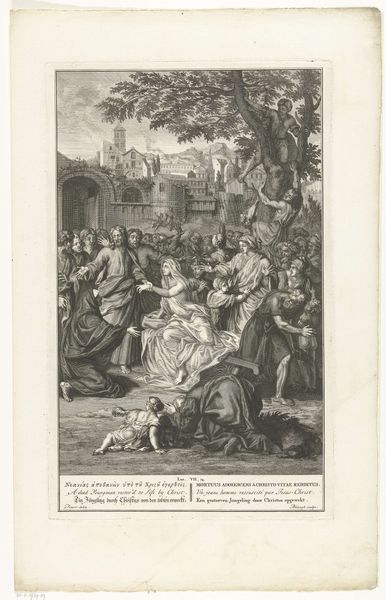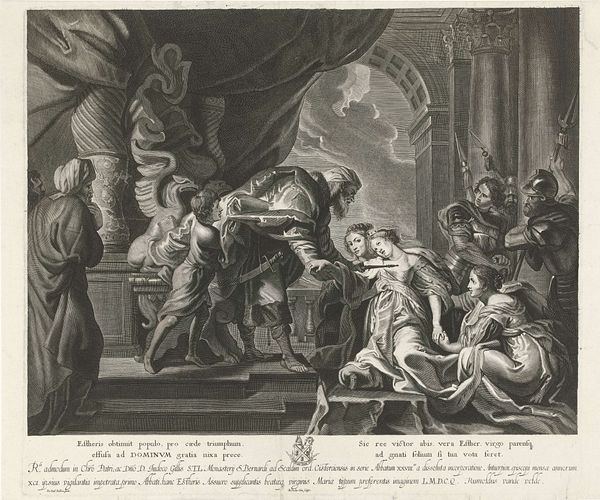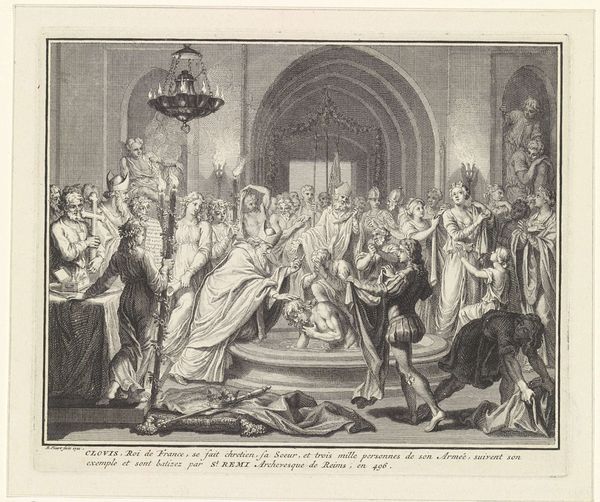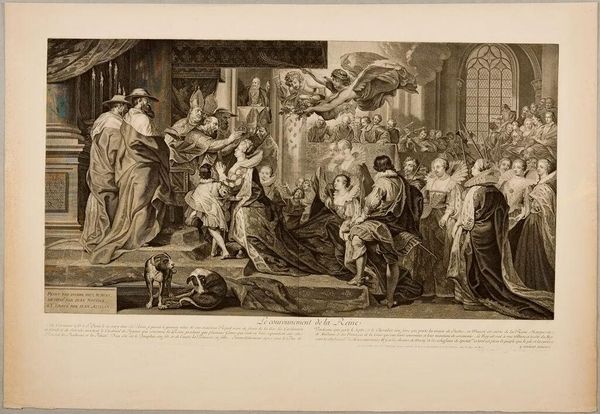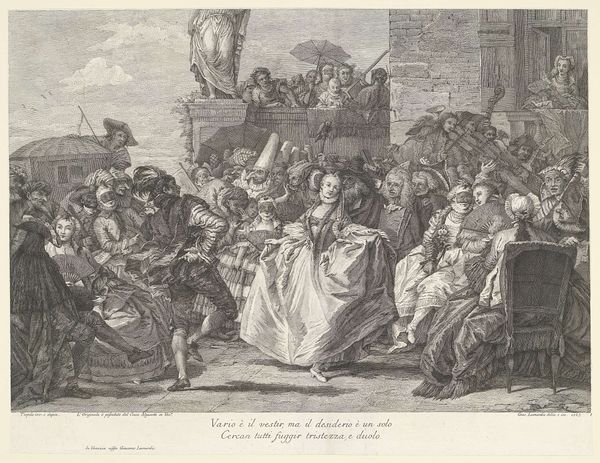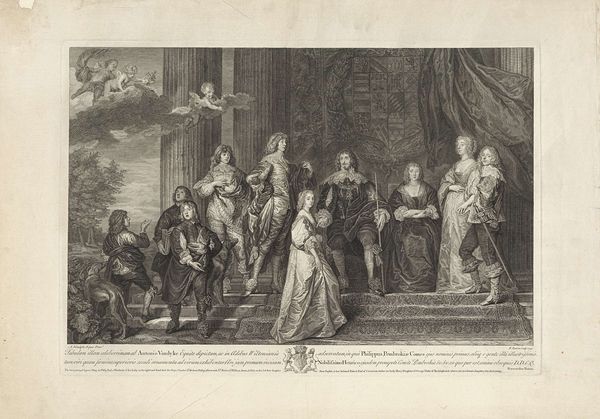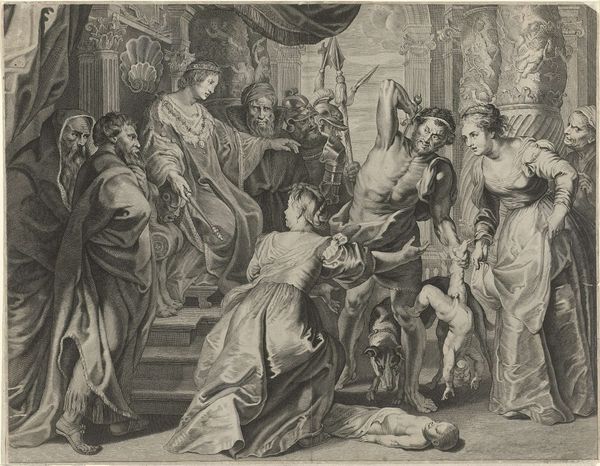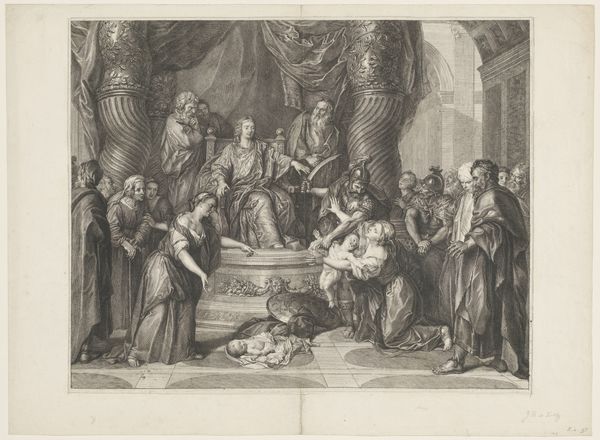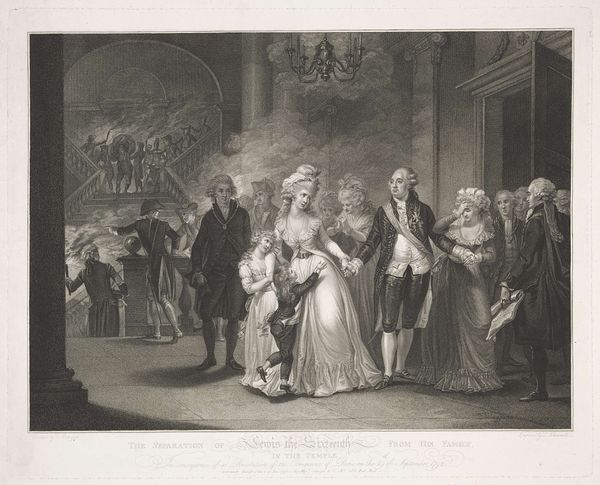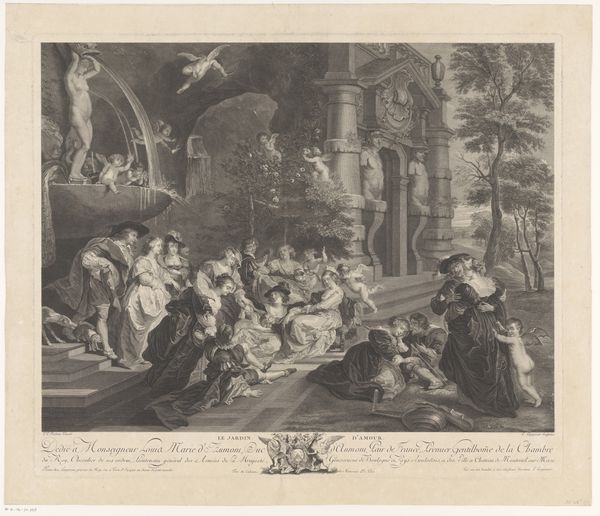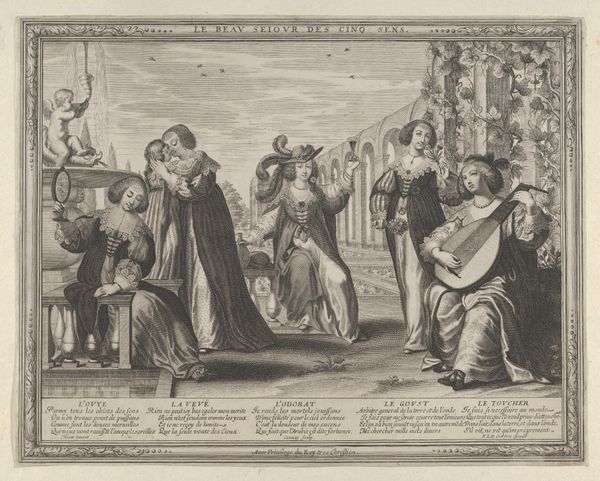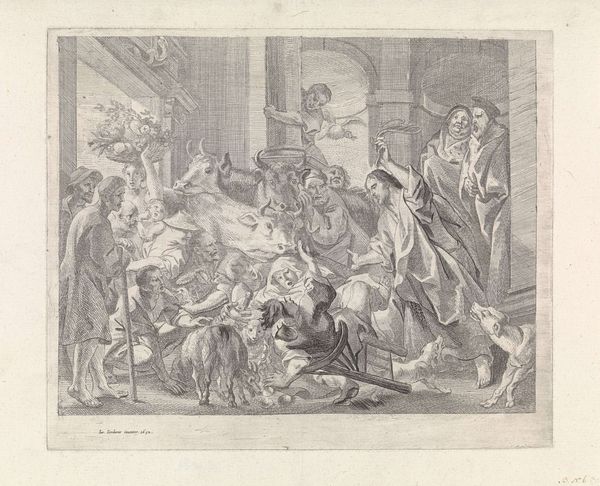
print, engraving
#
allegory
#
baroque
# print
#
genre-painting
#
history-painting
#
nude
#
engraving
Dimensions: height 450 mm, width 618 mm
Copyright: Rijks Museum: Open Domain
Petrus Clouwet engraved this scene, "Tuin der Liefde," capturing an allegory of love in the garden. Here, we see Venus, the goddess of love, enthroned atop a fountain, a direct descendant of classical antiquity's Aphrodite. Cherubs flit about, echoing Cupid’s timeless game of stirring desires. This visual language taps into a collective memory that reaches back to ancient Greece, yet it’s filtered through the Renaissance’s revival of classical themes. Consider how Botticelli, centuries earlier, painted Venus emerging from the sea, a symbol of beauty and love reborn. Now, see how Clouwet places her in a garden, a space traditionally associated with pleasure and courtship. Gardens themselves have appeared through the ages as spaces of love, as we see also in medieval tapestries depicting courtly love scenes. There is an undeniable yearning—an echo of primal desires coded within these figures. Like echoes in a dream, the image is of love, yet also subtly hints at the transience and fragility inherent in human connections. The image, therefore, is not a mere representation but a living embodiment of our enduring quest for love, eternally etched within our subconscious.
Comments
No comments
Be the first to comment and join the conversation on the ultimate creative platform.
